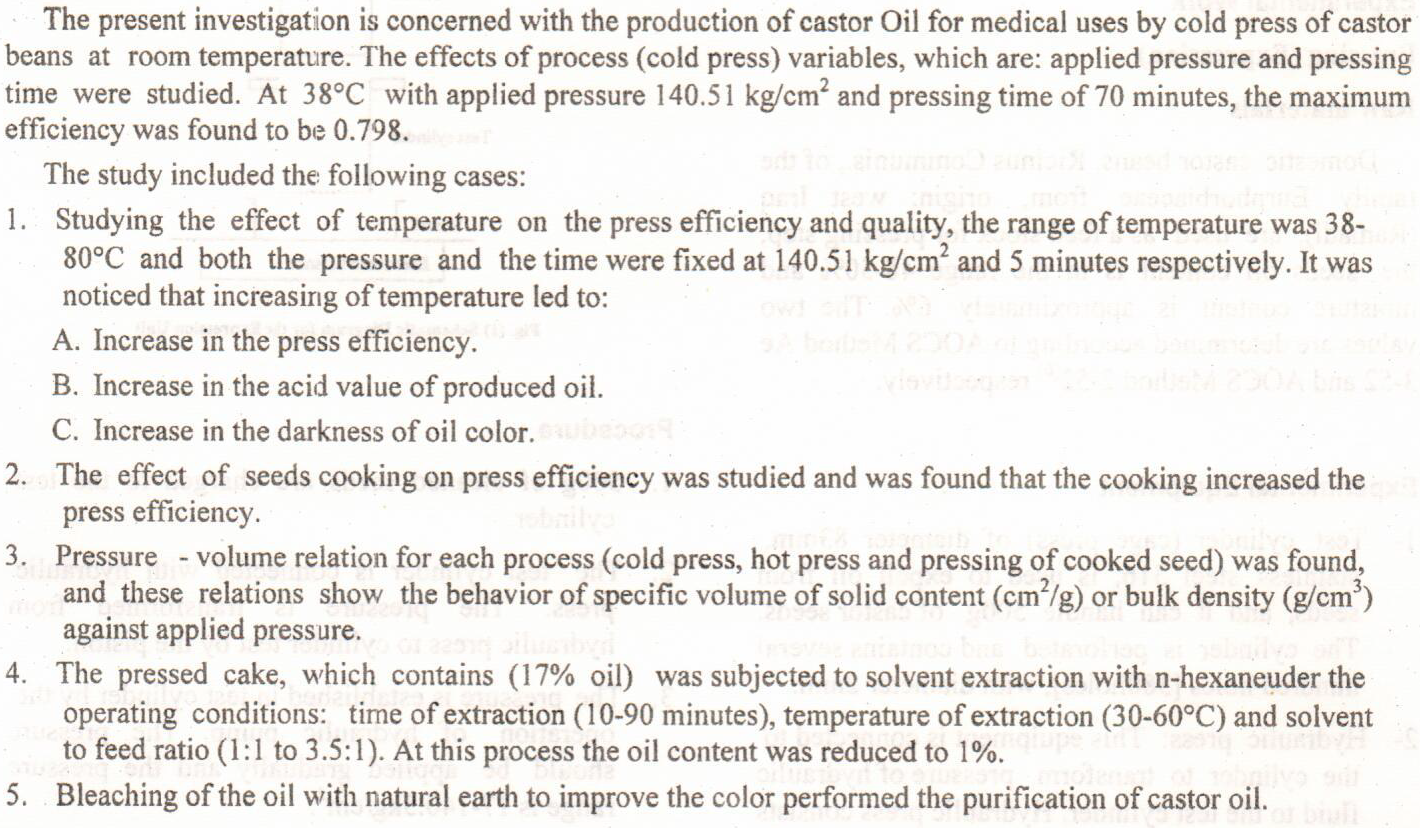
The acidity of spent lubricant was treated using sodium hydroxide solution. The effect of three variables on the treatment have been studied . These are mixing time rangingfrom 5-35 minutes, NaOH to lubricant weight ratio ranging from 0.25-1.25 and weight percentage of NaOH ranging from 2-6 % .
The experimental design of Box-Wilson method is adopted to find a useful relationship between the three controllable variables and the lowering in the acidity of the spent lubricant. Then the effective variables and interactions are identified using the statistical analysis(F-test) of three variable fractional design. The mathematical model is well represented by a second order polynomial.
By
... Show MoreObjectives:
To evaluate mothers’ attitudes toward readiness for discharge care at home for a premature baby in Intensive Care Unit at teaching hospitals in Medical City Complex and to find out the relationship between mothers’ attitudes and their socio-demographic characteristics.
Methodology: A quasi-experimental study design was carried out through the period of 6th January 2020 to 2021 to 11th March 2021, to evaluate mother’s attitude toward discharge care plan for premature babies. The study carried out in Welfare Teaching Hospital, Nursing Home Hospital and Baghdad Teaching Hospital at Medical City Complex in Baghdad City on 30 mother of premature babies in neonatal intensive care units using the nonprobability sampling
Abstract:
Since the railway transport sector is very important in many countries of the world, we have tried through this research to study the production function of this sector and to indicate the level of productivity under which it operates.
It was found through the estimation and analysis of the production function Kub - Duglas that the railway transport sector in Iraq suffers from a decline in the level of productivity, which was reflected in the deterioration of the level of services provided for the transport of passengers and goods. This led to the loss of the sector of importance in supporting the national economy and the reluctance of most passengers an
... Show MoreBackground: Depression, a state of low mood and aversion to activity, can affect people's thoughts, behavior, tendencies, feelings, and sense of well-being. It can either be short-term or long-term, depending on the severity of the person's condition. Risk factors include personal or family history of depression, major life changes, trauma, stress, certain physical illnesses, and medications.
Objective: This study investigates the prevalence of depression among medical students at the University of Baghdad, college of medicine in Iraq, and the association between some variables and depression.
Subjects and Methods: A cross-sectional study design with a convenience sampling method was conducted.
... Show More (1)
(1)
The research aims to derive the efficient industrial plans for Al – shaheed public company under risk by using Target MOTAD as a linear alternative model for the quadratic programming models.
The results showed that there had been a sort of (trade- off) between risk and the expected gross margins. And if the studied company strives to get high gross margin, it should tolerate risk and vice versa. So the management of Al- Shaheed Company to be invited to apply the suitable procedures in the production process, in order to get efficient plans that improves it's performance .
Advanced strategies for production forecasting, operational optimization, and decision-making enhancement have been employed through reservoir management and machine learning (ML) techniques. A hybrid model is established to predict future gas output in a gas reservoir through historical production data, including reservoir pressure, cumulative gas production, and cumulative water production for 67 months. The procedure starts with data preprocessing and applies seasonal exponential smoothing (SES) to capture seasonality and trends in production data, while an Artificial Neural Network (ANN) captures complicated spatiotemporal connections. The history replication in the models is quantified for accuracy through metric keys such as m
... Show More (1)
(1)
One of the most important problems in the oil production process and when its continuous flow, is emulsified oil (w/o emulsion), which in turn causes many problems, from the production line to the extended pipelines that are then transported to the oil refining process. It was observed that the nanomaterial (SiO2) supported the separation process by adding it to the emulsion sample and showed a high separation rate with the demulsifiers (RB6000) and (sebamax) where the percentage of separation was greater than (90 and 80 )% respectively, and less than that when dealing with (Sodium dodecyl sulfate and Diethylene glycol), the percentage of separation was (60% and 50%) respectively.
The high proportion
... Show More (1)
(1)
Iraq's oil industry has been passed in different periods , began with domination of Western companies to invest in Iraqi oil at twenties of the last century , through the process of nationalization of the shares of those companies , beginning of the seventies , and ending with the new policies adopted by the government recently, which was contracting with international companies to develop the oil industry , because of what the outcome of the oil industry from a decline in artistic and physical ability as a result to the conditions of war and embargo imposed on Iraq before 2003.
The Iraqi government has introduced licensing of a contract to
... Show MoreThis effort is related to describe and assess the performance of the Iraqi cement sample planned for oil well-cementing jobs in Iraq. In this paper, major cementing properties which are thickening time, compressive strength, and free water in addition to the rheological properties and filtration of cement slurry underneath definite circumstances are experimentally tested. The consequences point to that the Iraqi cement after special additives encounter the requests of the API standards and can consequently is used in cementing jobs for oil wells. At this research, there is a comparative investigation established on experimental work on the effectiveness of some additives that considered as waste materials which are silica fume, bauxite,
... Show More